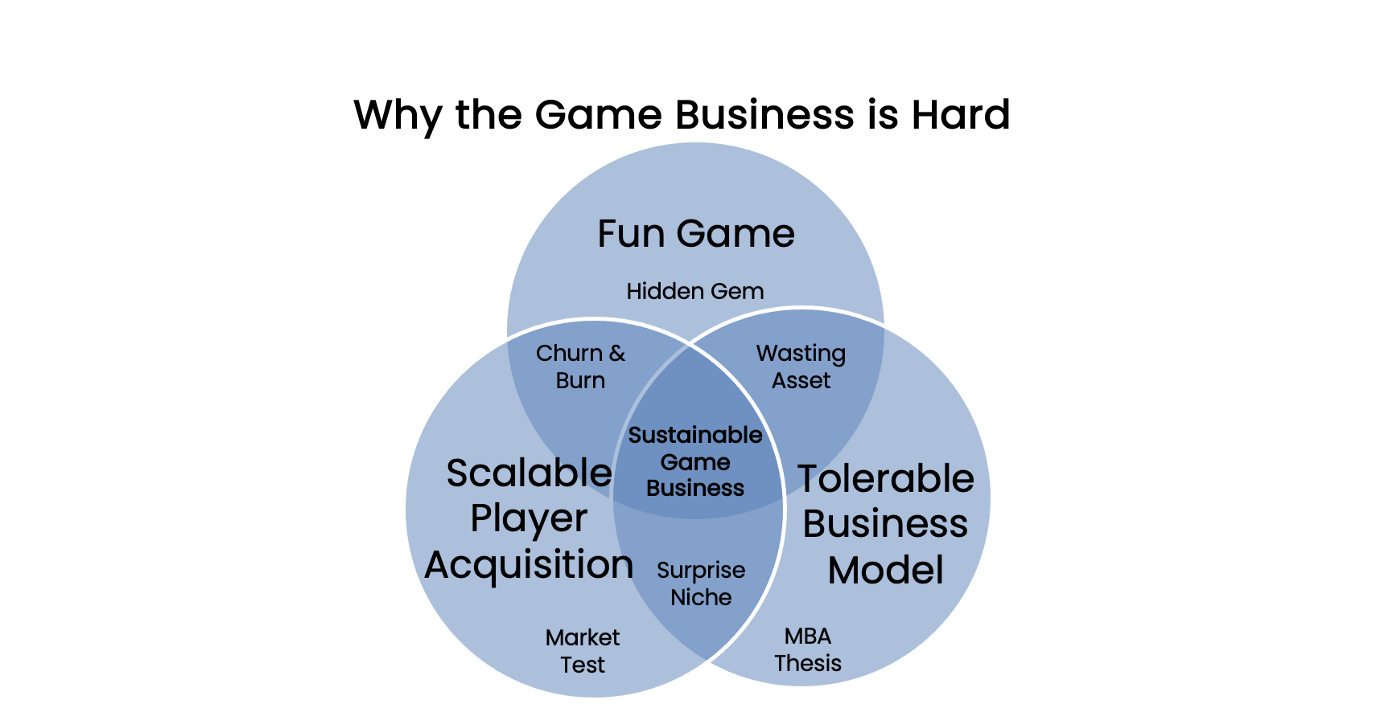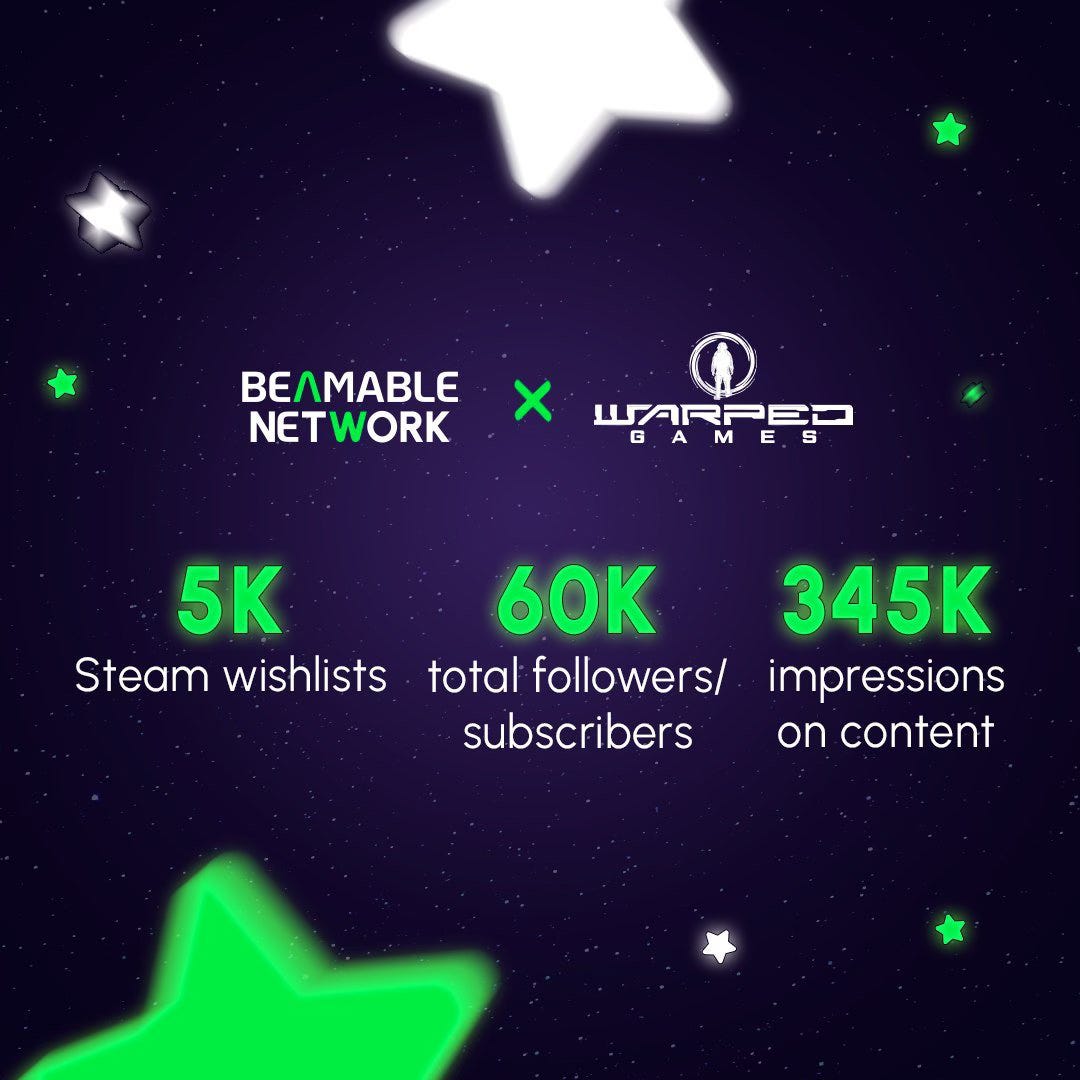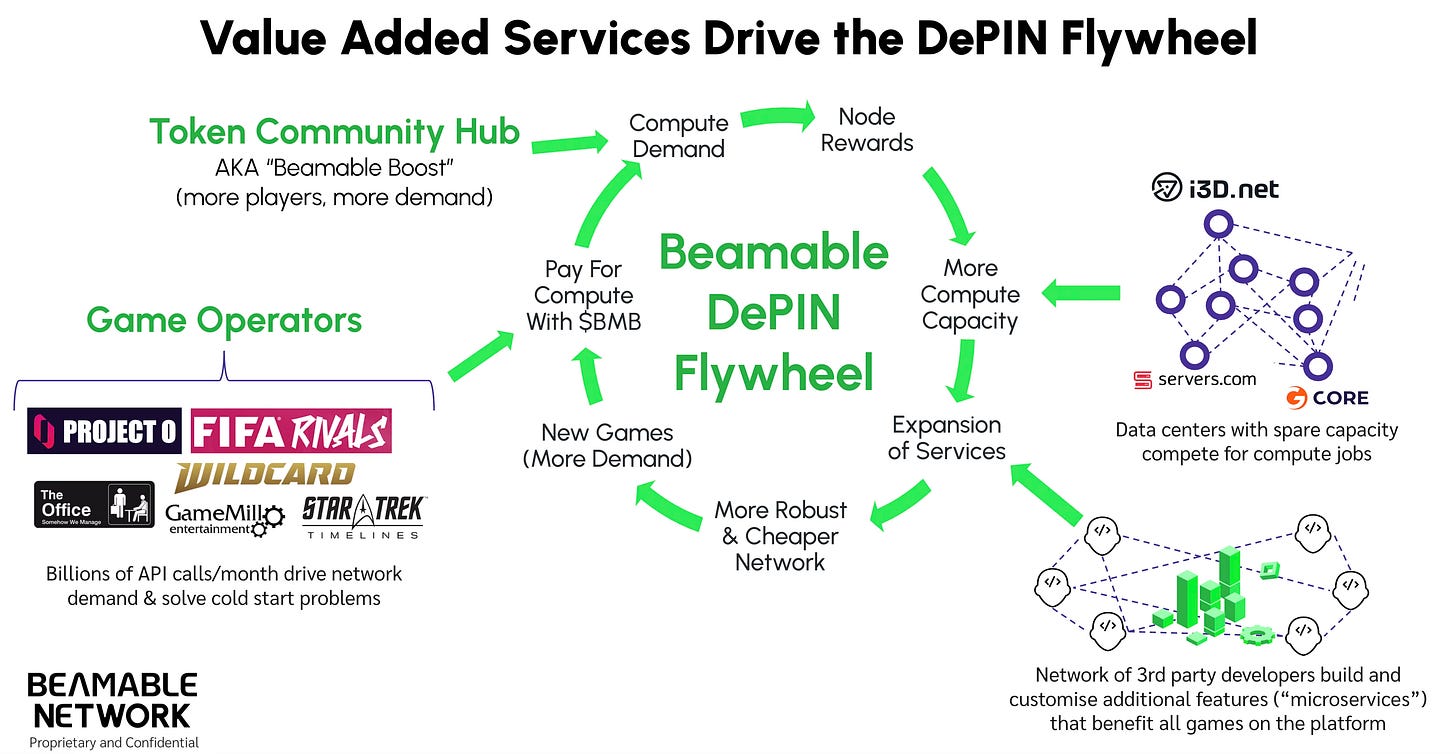The Vertical DePIN Growth Flywheel
How vertical DePINs for industries such as gaming can help their customers grow
In 2022 I wrote about why scaling games is so hard, and why it is getting harder. With all of the turnover, game shutdowns and studio layoffs in 2025—the challenges of this industry ought to be viscerally clear. In this article, I will explain how a decentralized physical infrastructure network (DePIN) that’s focused on the vertical industry of gaming—such as Beamable Network—can help.

The challenge of scaling games is something I’ve thought nonstop about for the last decade. It’s why I created Beamable: our mission is to make game businesses more sustainable. We do this by increasing development team velocity, which gives creators more shots on goal. The other way we help is ensuring that their technology can scale for the largest audiences without putting them out of business in the process.
But game developers have scaling needs beyond their infrastructure. Games need to acquire players, and that’s an aspect that’s gotten increasingly expensive (and unaffordable). Is there a way to align growing both infrastructure and customer acquisition?
At Beamable we’ve discovered a way to do it. It is a result of having a tokenized economy for our decentralized physical infrastructure network (DePIN) protocol. The Beamable token ($BMB, launching later this year) is a utility token that is used to provision backend computer services (game servers and data storage) needed to operate a live services game. Normally, this is a b2b operation: but as part of our community-building efforts, we began attracting millions of accounts who are interested in games.
Before long, we had millions of signups and nearly 100,000 connected Steam accounts. These are not your typical web3 user: they are gamers who want to support our vision for game development. And these members are eager to complete quests on the Beamable Network community hub, trying out new games in the process.
Verticalized DePIN Can Harness a Third Demand Driver: Engaged Communities
Traditional infrastructure networks usually engage only developers on the demand side and operators on the supply side. A vertical network like Beamable adds a third category: gamers (end-users) who actively participate. This widening of the flywheel is unique: it turns fans into advocates. Beamable Network uses tokens to encourage gamers to engage with new titles—which is critical for game studios—while providing immediate, active demand for the infrastructure.
This is a major advantage of vertical DePINs (like gaming) over generic clouds: they can tap into enthusiastic consumer communities alongside focused software ecosystems, not just behind-the-scenes servers.
We put this idea to the test with a program we called Beamable Boost, which helped studios like Warped Games grow their game overnight. Warped described the program as “the single best marketing promotion we have ever done.”
This is the power of fully-aligned incentives: game studios operate their infrastructure economically; community members earn tokens for doing what they already love; and as games grow, the protocol gets used more. It would be extraordinarily hard to create an alliance between all these stakeholders without a token to unite everyone.
Beamable Network is not just about providing compute but enabling value-added services needed by game developers—especially those that can drive a growth flywheel across our community, our game studios, and protocol. Whereas hyperscale cloud providers such as AWS grew by offering services beyond raw compute (with Beamable this is enabled through its open plug-in ecosystem), Beamable Network can also grow by offering services that drive usage and revenue.
One can imagine a number of other growth drivers: enhanced social systems; tournaments-as-a-service; economy and marketplace services; analytics and personalization. As these components help game studios optimize their performance metrics, it increases protocol usage, adds further utility to the token and benefits the gaming community as a whole.
Building the Gaming Growth Engine
Scaling great games demands more than servers: it requires a growth engine.
A vertical DePIN like Beamable Network fuses infrastructure, value‑added live‑ops services, and an incentivized player community into one self‑reinforcing flywheel. Developers lower costs and ship faster, gamers earn by championing the titles they love, and the $BMB token aligns everyone along the way. The result is a sustainable path to scale—technically and commercially—that traditional clouds simply can’t match.
Further Reading
My own articles from 2022 discussed the three things you need to get right to make a sustainable game business in Why Scaling Games is So Hard. My followup, Why the Game Business is Getting Harder, applied Porter’s Five Forces methods to understand the competitive pressures in the industry.
Matt Ball discussed the rising costs of customer acquisition The Tremendous Yet Troubled State of Gaming in 2024. Things have only gotten worse since then.
Game industry layoff data from 2022-2025 is here.
My own articles on DePIN can be found here:
The Disruptive Future of DePIN is about how disruptive this model is to the traditional cloud industry.
Wright’s Law: Cloud, Blockchain, and the Rise of DePIN answers the “why now” question with a lot of data around increasing blockchain volumes that correspond to decreasing unit economics.
Decentralized Game Infrastructure is about Beamable’s vision for scaling, derisking and democratizing live game technology.



